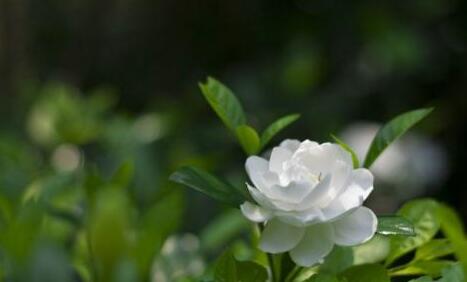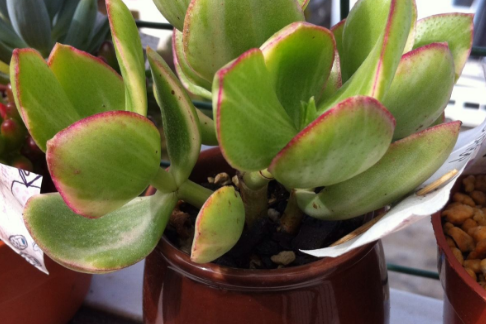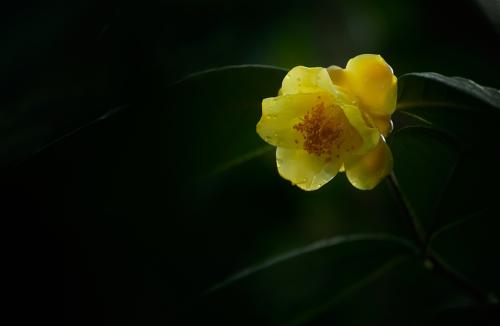Indoor Culture method of Camellia
1. Light temperature
Camellias like the environment with adequate light and ventilation, and are not resistant to high temperature and cold, so when breeding, we must pay attention to sufficient light and temperature regulation, do not put it on the balcony.
2. Water management
Camellias like the moist environment, resistant to semi-shade, so watering can be a little more, but not excessive, which can promote the growth of camellias. We should pay attention to the high temperature in summer, watering should be done in the morning and evening, and we should pay attention to reduce the watering times in winter to prevent freezing roots.
3. Soil management
Camellia soil requires loose soil and good drainage of sandy soil, it is best to mix some fertilizers to ensure adequate nutrients.
4. Disease and insect nuisance
As soon as pests are found, they should be dealt with immediately, such as spraying insecticide. if there is a disease, just cut off the diseased branches.
5. Pruning
For camellias, they must be pruned regularly in order to maintain their beautiful shape and bloom gorgeously, so they should be pruned from time to time.

Culture methods and matters needing attention of Camellia
Camellia is an attribute plant of Theaceae, which likes a warm and humid environment. Among the many flowers and plants, the flowering period of camellia is relatively long, and it can bloom from October to May of the following year. The colors of camellias are red, purple, white, yellow and other colors. Camellia is very popular because of its beautiful plant shape, thick green and glossy leaves and colorful flowers. Today, let's take a look at the cultivation methods and matters needing attention of camellia with the love of the editor. The soil of camellia culture method Camellia likes loose, fertile, well-drained sandy soil, loess and humus soil. Generally, when choosing soil culture, it can be cultivated with peat, sawn wood, red soil, humic soil, or above mixed substrate. The best PH for growing camellias is between 5 and 6.5. Soil with slightly acidic soil is the best. Camellia culture method of light, temperature camellia is a semi-shade plant, in the summer culture, need to give it shade. And after the Beginning of Autumn, the temperature dropped, camellia entered the flower bud to spend money, at this time to give it sufficient light. In winter, it should be kept indoors and in a sunny place. Camellia is a plant that shines for a long time, so it can only form flower buds in an environment that lasts 12 hours a day. Its growth temperature is 18-25 ℃. If it is higher than 35 ℃, its leaves will be burned. When breeding in winter, its temperature should be kept 3-5 ℃ earlier, and it can also endure a low temperature of-10 ℃ for a short time, but not more than 16 ℃ for a long time, otherwise it will promote germination and cause leaves to fall. The method of watering and fertilizing camellia has higher requirements for water, and its growth is ignored in neutral or alkaline soil. When watering, adding too much water will lead to rotting roots. If the basin soil can not be dry, it is easy to make the roots shrink because of water loss, so as to keep the basin soil and the surrounding environment moist. In the flowering period of camellia, don't spray water. When watering, do not pour water on its words, it is easy to cause mildew of flowers and shorten the florescence. When the camellia flowers fade, please remove the residual flowers in time. Winter watering is usually watered every three days to keep the pot soil moist. Camellia likes to be fat and usually applies sufficient base fertilizer when changing pots. In autumn and winter, rotten light liquid fertilizer should be applied once a week, and phosphorus and potassium fertilizer should be applied once or twice a week. When applying fertilizer, it can be poured with thin alum fertilizer. After sprouting in spring, apply thin fertilizer and water once every half a month, apply phosphorus and potassium fertilizer in summer, stop fertilizer for about one month in early autumn, apply alum fertilizer and water before flowering, and apply available phosphorus and potassium fertilizer when flowering, so that the flower is big and colorful and the flowering period is long. The shaping and pruning of camellia culture methods in the pruning of camellia, the dry and withered branches, diseased and weak branches, cross branches and overdense branches are mainly cut off. If the buds of the camellia affect the tree-shaped branches, the extra buds can be picked. If it is a potted camellia, you can trim it according to your preference, but when you trim it, you can't cut it too heavily, it will impress its growth. Camellia Note 1. When watering camellias, you must first store the tap water in a bucket for a day or two and let the chlorine evaporate. It is better to put 1% ferrous sulfate in the water to improve the water quality. 2. Camellia should not accept strong direct light, especially in summer and early autumn, it must be shaded. 3. When fertilizing camellias, if there is too much nitrogen fertilizer, it is easy to scorch the buds, and less or no fertilizer can be applied after flowering. 4. Because camellia is not cold-resistant, sometimes its flowering period will be delayed, which is quite normal. Conclusion: Camellia is an evergreen plant of the four seasons, its plant shape is beautiful, the leaves are thick green and shiny, and the flower shape is a traditional ornamental flower in China. It ranks eighth in the "Top Ten famous Flowers" and is also one of the most valuable flowers in the world. The above is the introduction of the camellia culture methods and matters needing attention brought by the editor. After reading the introduction of the editor, I believe everyone knows it better. Culture methods and matters needing attention of Camellia
Camellia is an attribute plant of Theaceae, which likes a warm and humid environment. Among the many flowers and plants, the flowering period of camellia is relatively long, and it can bloom from October to May of the following year. The colors of camellias are red, purple, white, yellow and other colors. Camellia is very popular because of its beautiful plant shape, thick green and glossy leaves and colorful flowers. Today, let's take a look at the cultivation methods and matters needing attention of camellia with the love of the editor. The soil of camellia culture method Camellia likes loose, fertile, well-drained sandy soil, loess and humus soil. Generally, when choosing soil culture, it can be cultivated with peat, sawn wood, red soil, humic soil, or above mixed substrate. The best PH for growing camellias is between 5 and 6.5. Soil with slightly acidic soil is the best. Camellia culture method of light, temperature camellia is a semi-shade plant, in the summer culture, need to give it shade. And after the Beginning of Autumn, the temperature dropped, camellia entered the flower bud to spend money, at this time to give it sufficient light. In winter, it should be kept indoors and in a sunny place. Camellia is a plant that shines for a long time, so it can only form flower buds in an environment that lasts 12 hours a day. Its growth temperature is 18-25 ℃. If it is higher than 35 ℃, its leaves will be burned. When breeding in winter, its temperature should be kept 3-5 ℃ earlier, and it can also endure a low temperature of-10 ℃ for a short time, but not more than 16 ℃ for a long time, otherwise it will promote germination and cause leaves to fall. The method of watering and fertilizing camellia has higher requirements for water, and its growth is ignored in neutral or alkaline soil. When watering, adding too much water will lead to rotting roots. If the basin soil can not be dry, it is easy to make the roots shrink because of water loss, so as to keep the basin soil and the surrounding environment moist. In the flowering period of camellia, don't spray water. When watering, do not pour water on its words, it is easy to cause mildew of flowers and shorten the florescence. When the camellia flowers fade, please remove the residual flowers in time. Winter watering is usually watered every three days to keep the pot soil moist. Camellia likes to be fat and usually applies sufficient base fertilizer when changing pots. In autumn and winter, rotten light liquid fertilizer should be applied once a week, and phosphorus and potassium fertilizer should be applied once or twice a week. When applying fertilizer, it can be poured with thin alum fertilizer. After sprouting in spring, apply thin fertilizer and water once every half a month, apply phosphorus and potassium fertilizer in summer, stop fertilizer for about one month in early autumn, apply alum fertilizer and water before flowering, and apply available phosphorus and potassium fertilizer when flowering, so that the flower is big and colorful and the flowering period is long. The shaping and pruning of camellia culture methods in the pruning of camellia, the dry and withered branches, diseased and weak branches, cross branches and overdense branches are mainly cut off. If the buds of the camellia affect the tree-shaped branches, the extra buds can be picked. If it is a potted camellia, you can trim it according to your preference, but when you trim it, you can't cut it too heavily, it will impress its growth. Camellia Note 1. When watering camellias, you must first store the tap water in a bucket for a day or two and let the chlorine evaporate. It is better to put 1% ferrous sulfate in the water to improve the water quality. 2. Camellia should not accept strong direct light, especially in summer and early autumn, it must be shaded. 3. When fertilizing camellias, if there is too much nitrogen fertilizer, it is easy to scorch the buds, and less or no fertilizer can be applied after flowering. 4. Because camellia is not cold-resistant, sometimes its flowering period will be delayed, which is quite normal. Conclusion: Camellia is an evergreen plant of the four seasons, its plant shape is beautiful, the leaves are thick green and shiny, and the flower shape is a traditional ornamental flower in China. It ranks eighth in the "Top Ten famous Flowers" and is also one of the most valuable flowers in the world. The above is the introduction of the camellia culture methods and matters needing attention brought by the editor. After reading the introduction of the editor, I believe everyone knows it better.
- Prev

Summer maintenance tips for flower month brocade
High temperatures and sultry weather prevail in summer all over the country, causing many pests and diseases to breed crazily. For summer maintenance of broccoli, attention must be paid to proper shade and ventilation. Shade is to avoid the leaves are burned, after all, no matter how much you like the sun, it is impossible to over-exposure ah. Ventilation is to evacuate the summer heat wave
- Next

Propagation mode of camellia
The main results are as follows: 1. During the growing period, the well-developed branches are selected and prepared before cutting, and finally inserted into the soil to wait for their roots. 2. Select a suitable plant as the rootstock by grafting, first plant the rootstock into the soil, then closely fit the camellia and the rootstock, and wrap them with plastic film
Related
- Fuxing push coffee new agricultural production and marketing class: lack of small-scale processing plants
- Jujube rice field leisure farm deep ploughing Yilan for five years to create a space for organic food and play
- Nongyu Farm-A trial of organic papaya for brave women with advanced technology
- Four points for attention in the prevention and control of diseases and insect pests of edible fungi
- How to add nutrient solution to Edible Fungi
- Is there any good way to control edible fungus mites?
- Open Inoculation Technology of Edible Fungi
- Is there any clever way to use fertilizer for edible fungus in winter?
- What agents are used to kill the pathogens of edible fungi in the mushroom shed?
- Rapid drying of Edible Fungi

